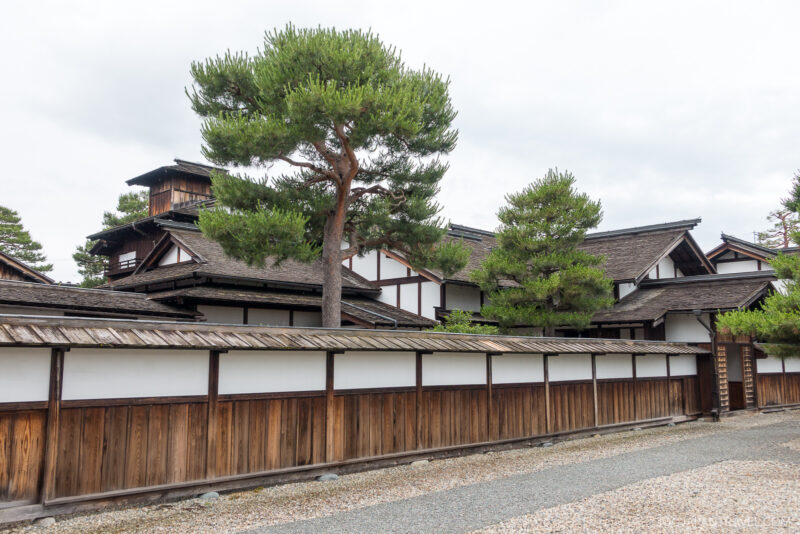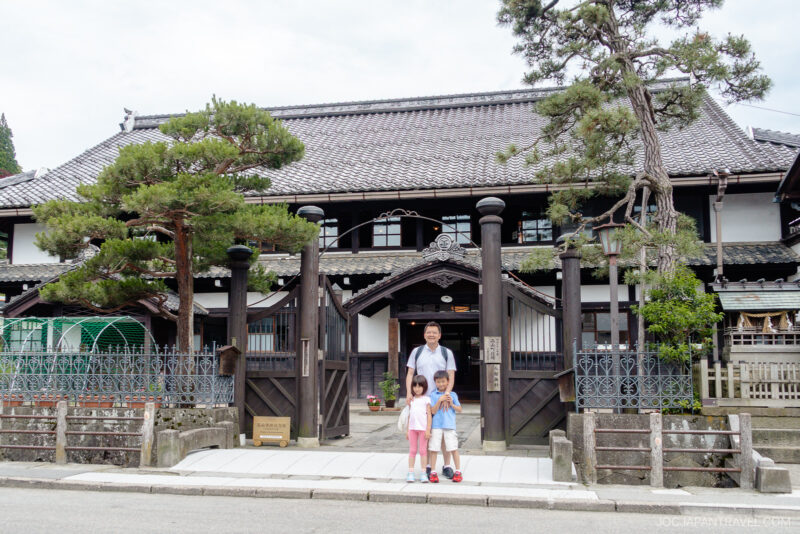This post may contain affiliate links. Please read our disclosure policy.
Stroll the main streets of Takayama’s Old Town (Sanmachi Suji) for a glimpse into everyday life during the Edo period.
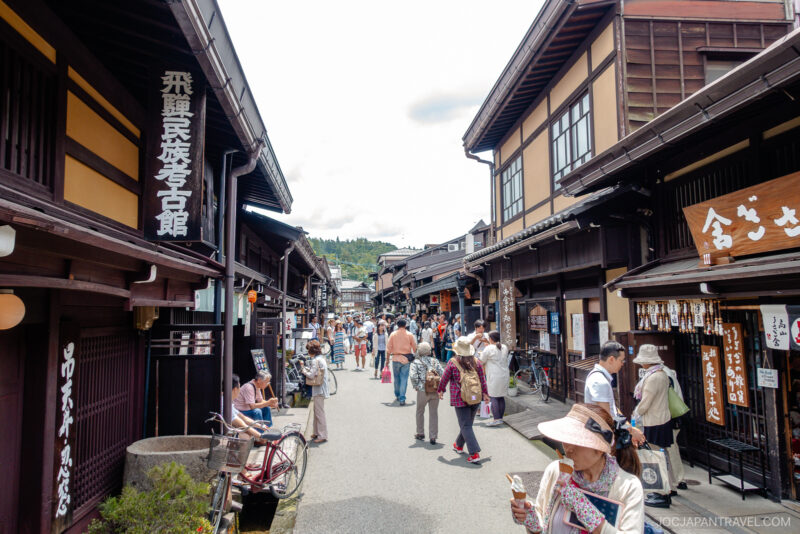
Discovering the Heart of Takayama’s Old Town
Tucked into the Japanese Alps, Takayama’s Old Town feels like a living time capsule. In the Sanmachi Suji (三町筋) district—especially along Kami Sannomachi—you’ll find some of the best-preserved merchant streets in all of Japan. These neighborhoods, often called the “Little Kyoto of Hida,” have been carefully maintained to reflect the architecture and charm of the Edo period.
Wandering Through the Edo Era
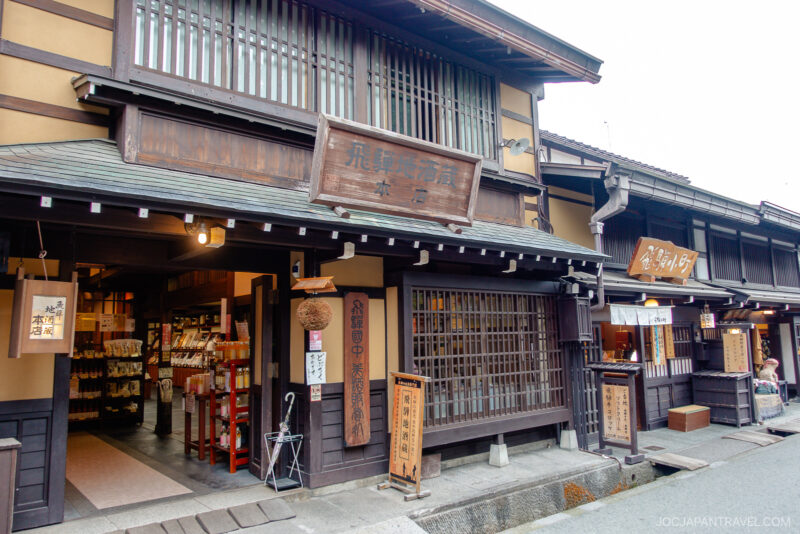
Sanmachi Suji is a small network of narrow streets, each lined with old wooden buildings, white lattice windows, and noren curtains swaying in the breeze. As we wandered around, we came across traditional sake breweries, cozy family-run shops, and houses that have clearly been around for generations.
Even the newer spots feel like they belong here. A lot of the shops focus on local crafts—things like hand-carved chopsticks, Hida lacquerware, and beautifully dyed textiles. We couldn’t resist grabbing snacks along the way: skewered Hida beef, fresh mochi, and even miso-flavored ice cream. One of the highlights? A sake tasting at an old brewery with a sugidama (a cedar ball) hanging at the entrance—it was such a fun way to soak up the local vibe.
A Fun Stop for Families
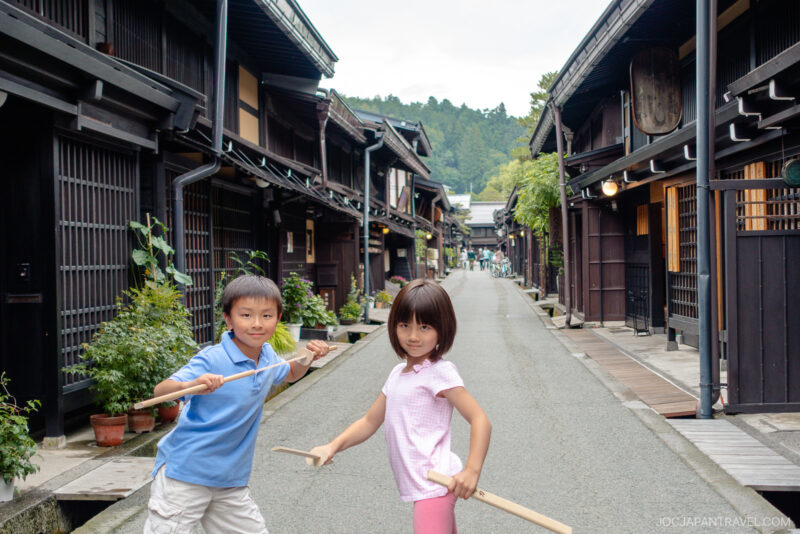
This part of town wasn’t just fascinating—it was fun. Our kids were drawn to the wooden samurai swords on display and ended up play-fighting down the quiet backstreets. The whole area has such a vivid, old-time feel that it’s easy for both kids and adults to feel like they’ve stepped into another era.
A Thousand Years of History
While Sanmachi Suji reflects Takayama’s Edo-era prosperity, the town’s history stretches back more than 1,000 years. As a remote mountain hub, it developed unique cultural traditions and deep spiritual roots. Exploring the Old Town gave us just a glimpse of that history, but it’s one we won’t soon forget.
How to Get to Takayama Main Streets
On Foot
- Exit Takayama Station through the East Exit and walk straight down Ekimae Chuo Street.
- Continue for about 600 meters and turn right on the second street after crossing the river.
- Total walk time: 10 minutes.
Pro Tip: Most shops open around 9 or 10 a.m., so arrive early for photos without crowds.
Is Takayama Main Streets Worth Stopping By?
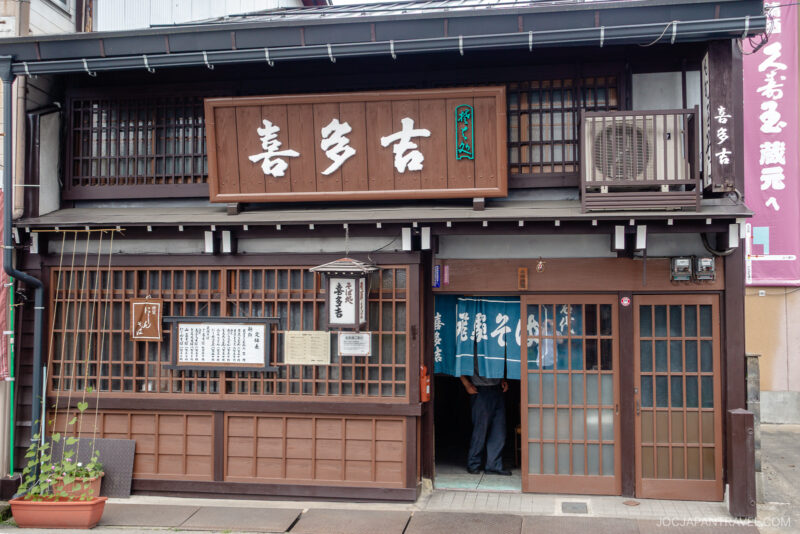
Sanmachi Suji ended up being one of our favorite parts of Takayama. Between the charming old buildings, friendly local shops, and delicious street food, it gave us a real sense of both the town’s history and everyday life today.
More to Explore Nearby
After wandering the narrow streets of Sanmachi Suji, surrounded by traditional shops and sake breweries, explore more of Takayama’s historic and cultural highlights:
- Takayama Jinya – Visit the last remaining Edo-period government outpost in Japan, just a short walk from the old town.
- Jinya Asaichi Morning Market – Browse local produce, pickles, and handmade goods right outside the Takayama Jinya.
- Takayama City Archives Museum – Learn about the town’s history through preserved documents and period artifacts.
- Nogawa Udon – Recharge with handmade udon noodles at this popular family-run eatery nearby.

